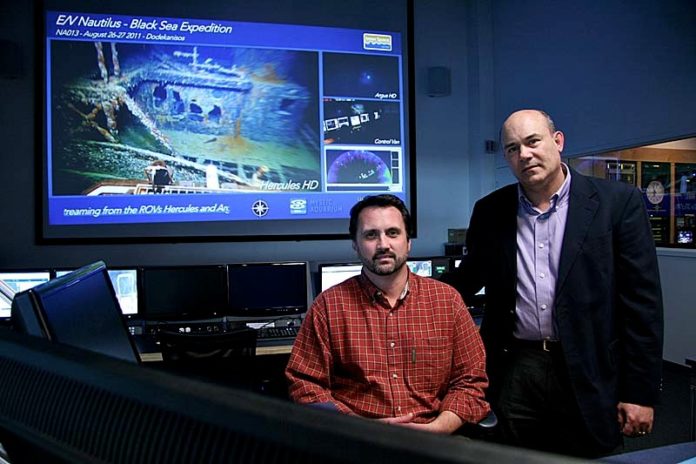
For the last seven years the state has played an active role in cultivating a technology industry that has grown, and expected to continue to grow for the foreseeable future.
According to the U.S. Department of Labor’s 2011 edition of the “Occupational Outlook Handbook,” employment opportunities for technological positions are expected to grow much faster than average, and job prospects will be excellent. Rapid growth is forecast in computer, database, biological, medical and environmental fields, to name a few, and the state plans to be ready to offer those opportunities.
That is why the R.I. Science and Technology Advisory Council was created in 2005, to increase and improve the state’s technological capabilities. In the last four years, it has awarded approximately $6.5 million to 38 teams from 35 research institutions. The funding has supported a wide range of products, from prosthetic limbs to high-tech toys for children with cerebral palsy. So far, recipients have gained nearly $10 million in follow-through funding from public and private sources.
The awards are part of STAC’s Collaborative Research Grant program, which provides funding to projects that will lead to new research opportunities of substance. Once the award is given and the research is performed, these projects could then be funded to a greater extent by federal agencies, corporations or foundations. If ready, they could also contribute to economic development in the state through development, and ultimately, commercialization. The goal is to encourage research that possesses an immediate application or has the ability to do so with additional national funding. STAC puts a high priority on identifying ways to support entrepreneurship and new-company creation across the state.
As the grant’s name implies, applicants must consist of more than one organization and must show an ability to work together. Proposed projects – not to exceed one year – are evaluated by a team of scientists in a peer-review process, as well as a STAC subcommittee, in order to determine scientific merit and impact on strategic growth, or employment.
“It’s highly competitive. Last year we had about 80 applicants, double what we’ve had in prior years,” said Christine M.B. Smith, executive director of STAC. At stake was $1.3 million in grant seed money. Only 10 percent receive funding and the total for each cannot exceed $200,000.
STAC funding is generated by the General Assembly, but the group also receives funding from the National Science Foundation’s Experimental Program to Stimulate Competitive Research award, which is a matching-fund program. By 2015, STAC anticipates $13.5 million in state funds will have been used with $28 million in federal funds.
The deadline for submitting grant applications for 2012 was Jan. 26. New grants are expected to be awarded in April.
“We want to be able to fund people to come together and do things that they can’t necessarily do separately,” Smith said. “We want them to become more competitive in that 12-month period, to accomplish some work that will make them more competitive for follow-on funding. It’s not just to fund work for further discovery but it’s to fund work that has a very high potential of leading to a new project or funding that will come to the state, or venture funding,” she said.
One such recent project involved faculty at the University of Rhode Island teaming up with RITE-Solutions, a small business out of Middletown, on a data handling and management project. It is an example of the type of collaboration the program is designed to assist.
“From a business perspective, the grant has provided us with an opportunity to prototype this vision that we’ve had into a system that will allow us to go after additional grants to fulfill our business strategy to grow,” said Jay Ferguson, program manager for RITE-Solutions.
RITE-Solutions’ task was to help the director of the URI Graduate School of Oceanography’s Inner Space Center, Dwight F. Coleman, with a serious problem.
The ISC – founded by Robert D. Ballard of Titanic fame – operates as a mission-control center for two exploration ships, each collecting a tremendous amount of data, about one terabyte (or 1,024 gigabytes) per day, per ship. The ships, the E/V Nautilus and the Oceanus Explorer collect data, including GPS coordinates, depth of water, salinity, conductivity and ocean-bottom features, just to name a few. The center operates as the eyes and ears of each ship and their remotely operated vehicles, and it records everything they do.
“In a case like side-scan sonar, there are acoustic pulses and all the reflections of that pulse are recorded,” Coleman said. “As you can imagine, that’s a tremendous amount of data for every second.”
“The three sciences we study on the ocean floor are biology, geology and archaeology,” Coleman said, thus, adding to the amount and variety of data. Coleman was faced with two problems; how to organize the data, and how to make the information easily accessible, a cross-referencing nightmare.
This is where the STAC grant and RITE-Solutions come into play. The information had to be coordinated with GPS locations and a timeline of each ship’s exploration route. A software system had to be invented to bring everything together, all at the click of a mouse. “In the past you would have to go through hours of mission data to find what you were looking for. With the development of our ‘mission browser’ you can look at the data and see it play out in the video,” Ferguson said. “It’s about access to information.” •










